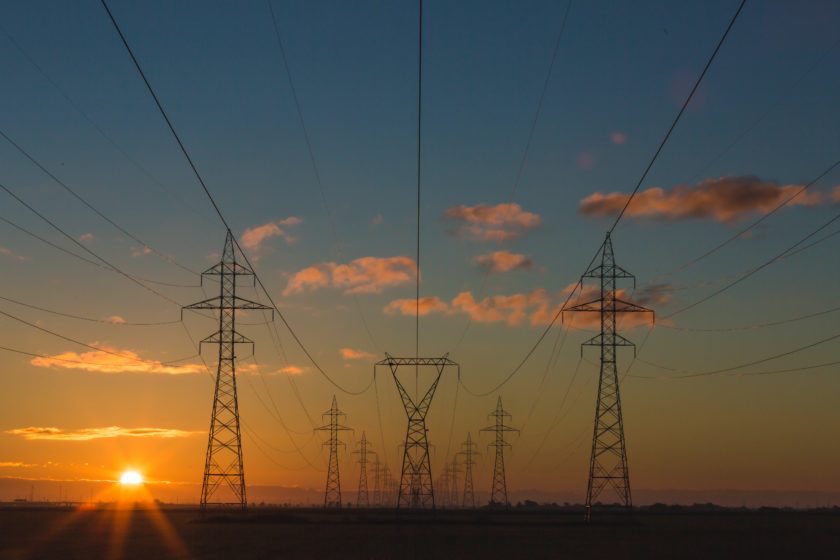With energy production and costs firmly in the spotlight, Louis Bromfield, Investment & Sustainability Associate in the Foresight Capital Management team at Foresight Group, says we now need to look at electrification of the world’s economies.
It is now more apparent than ever that we, as the stewards of this planet, must act on the matter of energy production. The cumulative effects of climate change are severe, undeniable, and already visible across the world. The increasing frequency of extreme weather events has led to devastating droughts, more frequent and destructive wildfires, rising sea levels threatening major coastal cities, and an unprecedented rate of biodiversity loss. With a recent study finding there to be just a 6-10% chance of limiting global warming to 1.5oC1, significant action is required to make meaningful progress towards a net-zero global economy.
An overhaul of the status quo
Almost three-quarters of today’s global greenhouse gases are emitted because of energy production2. Coupling this statistic with the forecast that global power demand is set to rise 50% by 2050 against 2018 levels3, the decarbonisation of power generation is the foundation upon which net-zero economies must be built.
Virtually every activity in modern life, whether it involves growing things, making things, or getting from place to place, results in the emission of greenhouse gases. Within the manufacturing sector for example, the carbon intensity of steel production alone accounts for between 6% and 9% of global greenhouse gas emissions.
To bring about a net-zero world, a thorough overhaul of the use of fossil fuels in the processes of the global economy’s most carbon-intensive industries such as transport, manufacturing, and chemicals is needed. The central pillar of global net zero targets therefore must be to electrify these processes and couple this electrification with a paralleled decarbonisation of the electricity generation system. The IEA’s analysis that global net zero commitments cover around 70% of total emissions4 is a positive step, but these commitments will need to be accompanied by huge investment into green technologies and wholesale regulatory change.
Spotlight on energy security
While reducing climate emissions is undoubtedly the biggest driver in the road to mass electrification, the Russian invasion of Ukraine has meant that the connections between energy, climate, trade, politics, and conflict have become acutely apparent. The need for expansion of renewable power to reduce dependency on Russian energy has become an urgent priority for many European nations. Much like the 1970s energy crisis which prompted the first shift towards energy-saving technologies, the conflict has brought about a level of urgency which, if channelled effectively, could pave the way in Europe for a process of deep decarbonisation.
Becoming net-zero
The production of clean energy is a fast-maturing market with large investment opportunities. Onshore wind turbines now generate electricity at a utility scale comparable to conventional power plants and an increase in onshore wind from generating 5% of world electricity use to 21% by 2050 could reduce emissions by 147.7 gigatons of carbon dioxide5. Today, wind and solar generation account for 10% of electricity generation. However, deployment of these clean energy sources needs to grow to 40% of electricity generation by 2030 and over 75% by 20506. Nuclear power remains the only carbon-free energy source that can reliably deliver power without intermittency and the UK government recently outlined its ambition to increase the current nuclear power capacity of 6.8GW to 24 GW by 20507.
Achieving important climate milestones will require the evolution of electrical grids. To hit global net-zero targets, electrical grids and their associated infrastructure will need to underpin a vast range of sectors across the global economy, particularly the transport, manufacturing, and chemicals industries. Estimates put the required investment at around EUR 400bn8. Electrification will ensure that the processes of carbon-intensive sectors will no longer need to rely on fossil fuels alone and will reduce emissions despite increasing global demand.
Supporting the pathway to net zero
The significant sums necessary to facilitate the electrification of our economies presents an opportunity for investors to participate in the global shift to clean energy. In manufacturing, electricity already accounts for around 25% of all energy used by the sector. To power increasingly electrified industrial processes, it will be necessary to innovate and deploy clean energy technologies, with companies providing storage and grid management solutions also set to play an increasingly significant role. In transport, this will mean providing capital to companies at the forefront of areas such as electric vehicles, charging infrastructure, and biofuels. Within the chemicals industry, companies that improve resource and energy efficiency and look to create chemicals through bio-based feedstocks such as plant fats, starch, or lignin will be well-placed to grow over the next 30 years.
The rationale for mass electrification is clear from an environmental, geopolitical and investment perspective. Investors looking to ride the tailwinds of the upcoming technological and economic transformation should pay close attention to the various opportunities presented by the electrification of the world’s economies.
References
1https://www.nature.com/articles/s41586-022-04553-z.epdf?sharing_token=Ig-bsoXJEwHeZqcQwh_7ltRgN0jAjWel9jnR3ZoTv0M300RSN_AgLPC24xTg-EsjBHT–C2URS0u7zmcqcM_N_nWRP7CDm2P0o7xvqkH8Ol4pnbyv3rb24BWBPCpUQjPKXQIqvM8pfRgs3LygtMvtSeogIuAlm2q05j8W4gm9i9oFldOE6Y9_FekrjZ2QqbTQE-qVP-BDOsl6m63oQxx6A2YF-jPPBwkZQOXmMF8ExE%3D&tracking_referrer=www.bbc.co.uk
2https://www.c2es.org/content/international-emissions/
3https://www.eia.gov/todayinenergy/detail.php?id=41433
4 https://www.iea.org/reports/net-zero-by-2050
5 https://drawdown.org/solutions/onshore-wind-turbines
6 https://www.gov.uk/government/news/major-acceleration-of-homegrown-power-in-britains-plan-for-greater-energy-independence#:~:text=The%20government’s%20British%20Energy%20Security,by%202030%20being%20low%20carbon.
7 https://www.gov.uk/government/news/major-acceleration-of-homegrown-power-in-britains-plan-for-greater-energy-independence#:~:text=The%20government’s%20British%20Energy%20Security,by%202030%20being%20low%20carbon.
8 https://www.eurelectric.org/connecting-the-dots/






























